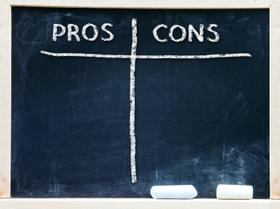Despite the budget cuts that have hit school districts nationwide over the past two years, recent numbers released for 2008 show that education was surprisingly healthy in the financial realm before the economic slowdown.
A recent analysis of U.S. Census Data by Bloomberg showed that public school systems spent more on education per student during this year than in the previous 16 years of education spending. An article in Bloomberg Businessweek recently reported that the average spending per student across the country was $ 10,259, with some districts spending more and others spending much less.
What the Numbers Show
The Bloomberg report was calculated for the 2007-2008 school year, and it included all 50 states. To get an accurate picture of education spending over the last two decades, numbers were adjusted for inflation. The results showed that this particular academic year boasted the biggest spending increase since at least 1992, the earliest year this type of data was available.
In a Georgia Education News blog report, Lisa Blumerman, chief of the Governments Division at the U.S. Census Bureau, said, "This report on public school spending shows us how taxpayer money is being spent on education. Public education is the single largest category of all state and local government expenditures. These data provide a detailed picture of how available resources are spent within the public education system."
School funding comes from various local, state, and federal sources. In 2008, public school systems received $582.1 billion in funding. Of this amount, 48.3% came from state governments, 43.7% from local sources, and 8.1% from federal sources. Spending during that year increased by about 6%, with more than half of that money allocated toward instruction and another large portion spent on transportation and school maintenance costs.
This video discusses the true cost of public education.
Who Spends the Most?
Which state spent the most per student during the 2007-2008 school year? According to the U.S. Census Bureau numbers, New York led the pack with a hefty $17,173 spent per student that academic year. New York was followed closely by New Jersey ($16,491), Alaska ($14,630), and the District of Columbia ($14,594). The states that spent the least on public education per student include Utah ($5,765), Idaho ($6,931) and Arizona ($7,608).
Despite the large amount that New York spends on its public school system, the numbers do not appear to correlate with higher academic success, according to a report from WKTV in Utica, New York. This article states that New York students fall below the national average in graduation rates, with 83% of high school students graduating in this state. The number is one percentage lower than the national average and seven percent lower than Utah, a state that spends much less per student on education.
While New York spends more per student than any other state, those numbers do not reflect a consistent spending rate across the state. Tim Kremer, Executive Director of the New York State School Board Association, told WKTV, "Expenditures, per pupil, paid downstate are far higher than those paid upstate. It is the downstate numbers that are driving the figures that make us number one."
Factors Affecting School Spending
While these census figures are compelling, they merely represent a snapshot of the current state of education today. The recent economic downturn has undoubtedly affected the per-student spending in states across the country, and today's numbers may reflect a much different picture than what was painted during the 2007-2008 academic year. Jack Jennings, president of the Center for Education Policy, told Bloomberg Businessweek that state spending per student is affected by the following factors:
- Economic activity
- Current tax rates
- Cost of labor and materials
Jennings adds that higher spending levels can mean better facilities and higher-paid, quality teachers, but only if school administrators and instructors are held accountable for their spending choices.
"School quality isn't just about money, but money certainly helps," Jennings said.
This video discusses the impact of spending on education.
The data used for this report resulted from the census of all 15,569 public school districts. Because the data was all-inclusive, the study was not subject to sampling errors. The report also included information on breakdowns of funding sources for each state, instructional salaries, and the impact property taxes had on school spending in each area. The numbers listed will not accurately reflect current spending patterns. Still, a report from the Center on Education Policy is due out soon to reflect the decline in funding over 2009 and 2010. To determine how your state is stacked up in the public school spending roster, peruse the data available on the U.S. Census Bureau’s website.
Questions? Contact us on Facebook. @publicscholreview












